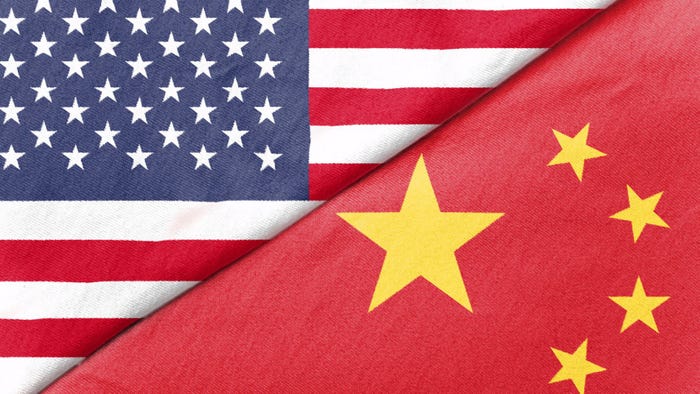IP and its role in AI innovation
Much has been published about the role of AI in innovation, but relatively little about the role of intellectual property in protecting AI-based systems and algorithms. Without some knowledge of how to construct an IP portfolio, innovators could be limiting their appeal for potential investors, whilst also leaving the way open for competitors
July 20, 2020

Sponsored Content
Much has been published about the role of AI in innovation, but relatively little about the role of intellectual property (IP) in protecting AI-based systems and algorithms.
Without some knowledge of how to construct an IP portfolio however, innovators could be limiting their appeal for potential investors whilst also leaving the way open for competitors to copy their key innovations.
Who needs a patent
Much like those in any other fast-moving area of R&D, innovators of AI and machine learning related technologies often have to invest large sums at an early stage. This money is spent in developing and training models, and then testing their deployment for specific end uses or applications. Securing patent protection at the outset will not only prevent competitors from copying their innovations and potentially winning the race to market, it can also help to attract investors seeking to capitalise on a growth market.
Before backing an early-stage business, investors will typically look for a strong IP portfolio, seeing it as an indication that there is value in the business. They are more likely to be drawn to investment opportunities if high-quality patents exist that cover the business’ core activities. A seminal paper published by Haeussler et al. in 2014 supported this conclusion, finding that the filing of patent applications is positively related to venture capital financing. As an example of this within the AI and machine learning space, autonomous delivery vehicle company, Nuro, was founded in 2016 and has around 100 patent filings, enjoying just over $1bn in total equity funding to date. Indigo Agriculture, a Boston-based agritech company founded in the same year, provides a further example of a strong IP portfolio -163 patent filings, supporting significant investment, almost $1.1bn in total equity funding to date.
Research compiled recently by European intellectual property firm, Withers & Rogers, shows that while around two thirds of European patent applications for AI inventions relate to the use of existing algorithms to solve a technical problem, a growing number are directed to the algorithms themselves. The research which is based on published European patent data between 2016 and 2019 reveals that about one in four relate to AI and machine learning algorithms. As many of the patent publications studied were European patent applications, having corresponding US and international patent applications, a similar picture is likely to be evident in the US and in other jurisdictions.
The public nature of patent applications requires careful consideration. Every patent application will publish, typically 18 months after filing, unless withdrawn prior to publication. Innovative businesses therefore need to weigh up which aspects of their activity to put forward as patent applications and which are best kept as trade secrets. One key question underlying this consideration is how easy it is to detect infringement.
If a company cannot identify when an infringement has taken place, it is difficult to enforce their patent rights and stop competitors from copying them. However, without patent protection, there is always a risk that a competitor might develop something similar and secure a monopoly to bring it to market. Therefore, it is important for companies to discuss and develop a robust IP strategy as early as possible in order to ensure that their core innovations are suitably protected and their value captured.
With the number of patents filed for AI and machine learning technologies growing rapidly year on year, patent offices around the world have gained considerable knowledge in this area, which is further smoothing the way for innovators. The European Patent Office (EPO) recently published its ‘New Guidelines for Examination’, which make it clear that as long as innovators can demonstrate that their invention provides a technical solution to a technical problem, it will be assessed and examined in the same way as other software-based inventions. Other patent offices, such as those in the UK and Japan, have also released useful guidance regarding how AI and machine learning based patent applications are examined, with the United States expected to follow suit in the coming years.
In a rapidly evolving space, it is still possible for inventors of AI and machine learning enabled technologies to stake a claim to the emerging market opportunity. They can do this either by bringing solutions to market with the protection of monopoly rights or by licensing their innovations to third parties in exchange for royalty payments. Both options will involve building a robust, multi-dimensional patent portfolio and IP strategy that is built on an understanding of its commercial strengths.
Dr Harry Strange is an associate at European intellectual property firm, Withers & Rogers. He specialises in advising innovative businesses in the field of computer science with a particular interest in AI & machine learning, cybersecurity, and distributed ledger technologies.
You May Also Like



.jpg?width=300&auto=webp&quality=80&disable=upscale)
.jpg?width=300&auto=webp&quality=80&disable=upscale)
.jpg?width=300&auto=webp&quality=80&disable=upscale)

.jpg?width=300&auto=webp&quality=80&disable=upscale)